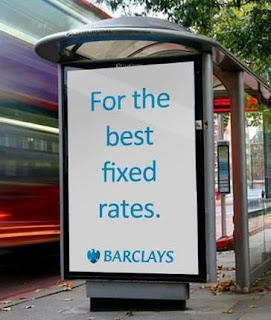LIBOR Rigging - another scandal involving the lack of transparency when it comes to the banks, central banks and regulators…
First, have you ever wondered how is LIBOR- this benchmark rate which sets roughly $800 trillion worth of financial instruments (swaps, derivatives, mortgages, credit cards, savings, loans) – determined?
The rate is generated through a daily survey of 16 banks - the world’s biggest lenders, who estimate how much it will cost them to borrow money from other banks. Therefore the rate is not even based on actual lending data but it’s set on these banks submitting their bids.
I don’t know about you, but I never questioned if the way LIBOR is determined is transparent, fair, accurate. Unfortunately it takes a scandal for the general public to question a fundamental rate such as LIBOR, which is the catalyst that determines the flow of global billions of dollars on a yearly basis…
The alarm about how LIBOR is set and what the implications of it are, has been raised in the past and ignored. In fact, it has been argued that the repair is not difficult at all – one simple solution is basing the rate on actual lending data wherever possible and increasing the number of banks in the panel to increase transparency.
Thanks to emails, phone calls, we were able to see and hear how easy it was for the traders to “fix LIBOR”. Although the banks usually blame scandals on a few rogue traders, we can’t possibly believe that the majority of the 16 banks were the only players in this scandal, let alone that these traders were the only players. Where do the regulators fit in this picture and how did they benefit from keeping quiet of what was happening? The Federal Reserve Bank of New York may have known in 2007 that the setting of LIBOR was flawed. It even followed an inquiry with Barclays in 2008 but no change to the process came out of it.
During the most recent financial crisis, maintaining low rates was key to making banks appear in good financial health. British banks like most financial institutions did not have easy access to capital and recapitalization, therefore the motive for the central bank was precisely that : to lower LIBOR. Higher LIBOR rates would have made the job of the central bank more difficult.
Is the LIBOR rigging a scandal that will drag on in terms of the lawsuits in years to come ? Absolutely… But this is only the tip of the iceberg…
Anna Nepravishta
Anna Nepravishta


It's alarming how the feds had knowledge about this in 2007. So much for keeping the integrity of capital markets
ReplyDeleteGet RID of the feds RonPaul for president.
ReplyDelete